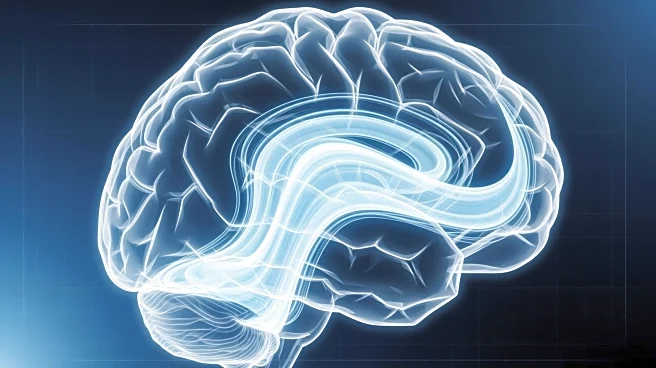What's Happening?
Researchers from Leiden University Medical Center, University of Amsterdam, and the German Center for Neurodegenerative Diseases have developed a novel MRI-based technique to study cerebrospinal fluid
(CSF) motion in the brain. This new method allows for high-resolution imaging of CSF movement, particularly around small vessels deep in the brain where toxic proteins are often produced. The technique isolates CSF signals and encodes their motion, providing insights into the brain's clearance system. Initial tests on healthy volunteers and patients with cerebral amyloid angiopathy (CAA) revealed distinct CSF movement patterns, supporting the hypothesis that impaired CSF mobility is linked to protein build-up in the brain.
Why It's Important?
This advancement is significant as it offers a non-invasive way to study the brain's clearance system, which is crucial for understanding and potentially treating neurological diseases like Alzheimer's. The ability to visualize CSF movement with high precision could lead to better diagnostic tools and therapeutic strategies for conditions associated with protein accumulation. By understanding how CSF mobility changes in various conditions, researchers can develop targeted interventions to improve brain health and prevent neurodegenerative diseases.
What's Next?
The researchers plan to further explore CSF mobility in different contexts, such as during sleep and in patients with other neurodegenerative disorders. This could enhance understanding of how CSF motion relates to waste clearance in the brain and how these processes are disrupted in disease. The team is also working on reducing scan times using advanced reconstruction techniques, which would make the method more accessible for larger studies and clinical applications.
Beyond the Headlines
The development of this imaging technique could have broader implications for neuroscience research and clinical practice. By providing a detailed view of CSF dynamics, it may uncover new pathways for drug delivery and treatment of brain disorders. Additionally, understanding CSF flow could lead to insights into the brain's response to various physiological and pathological conditions, potentially influencing future research directions in neurology and psychiatry.











